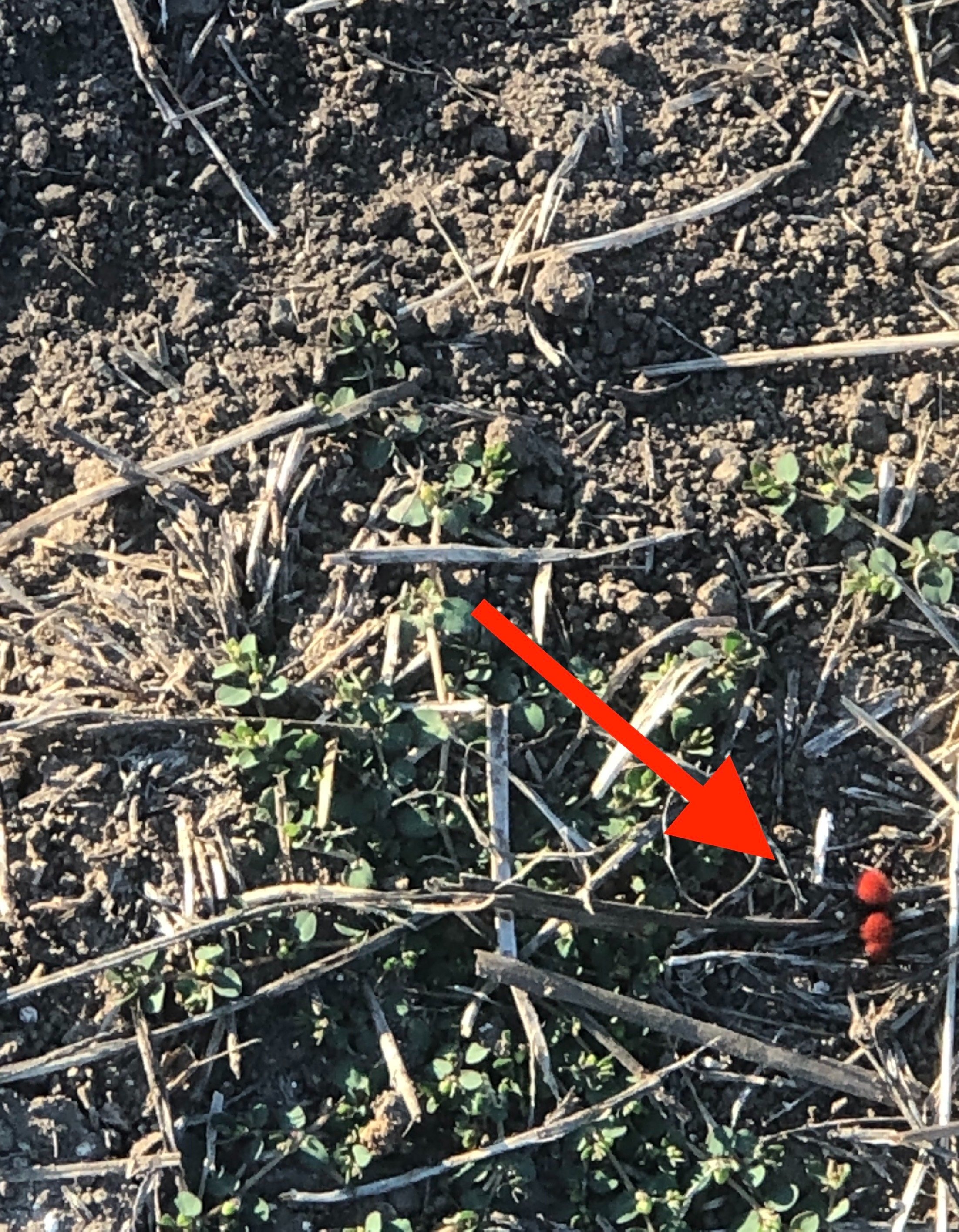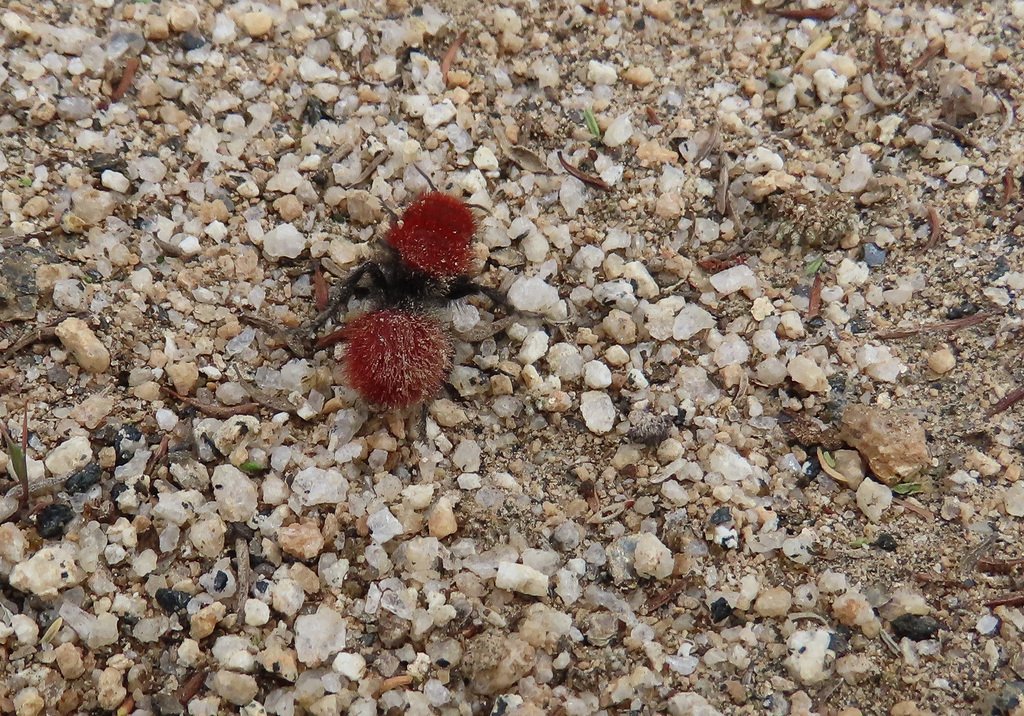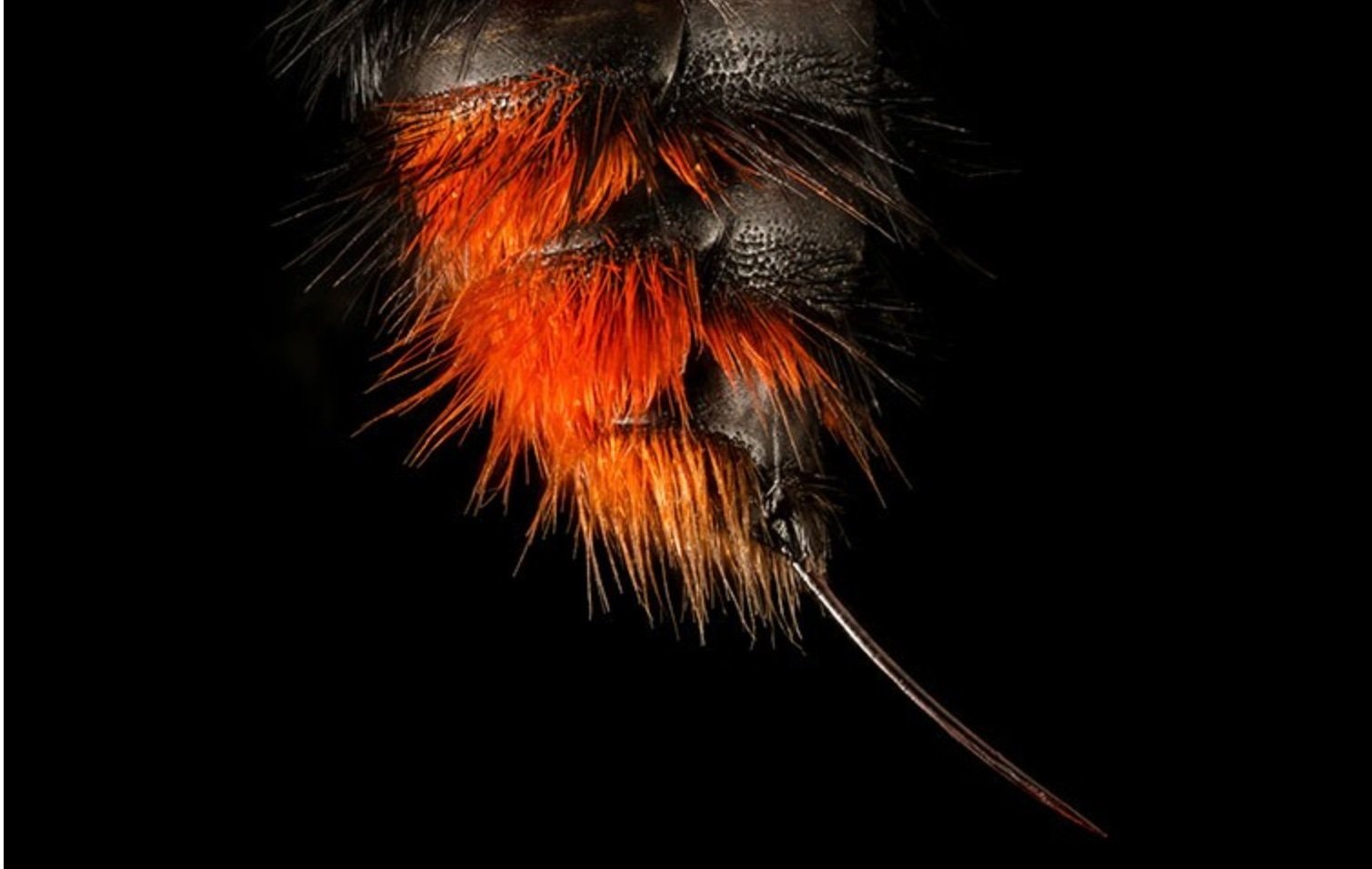Velvet Ant: a lot of punch for a small critter
By Mike Kelly
Several times now, I’ve encountered the little female in the picture. She’s a Pacific Velvet Ant (Dasymutilla aureola). I’m glad I never tried to capture her for a closeup look since I learned she’s actually a wasp that looks like an ant (!) and has a stinger that can deliver a big punch in the way of pain. The encounters with her (them?) have been in our restoration sites near Doug Hill, several times in the dirt road.
Velvet ants are a suborder of the wasp family Mutillidae, a family with some 8,000 species. The reason I was able to follow and photograph “my” velvet ant was that females are wingless and have to stay on the ground. The males have wings and are constantly looking for the females to mate with them. They’re solitary. My photo isn’t of the best quality or up very close so I’ve provided some more higher quality photos courtesy of Alan King and USGS Bee inventory and Monitoring Lab.
Bold colors in nature are often a warning to predators I’m going to hurt you if you attack me and velvet ants are no exception. They have a long stinger (see photo) that delivers a strong sting. A common name for them is cow killers because of the strength of the sting, although it’s doubted it would actually kill a cow. They also give off a strong odor that is repulsive to predators. Yet another defense is a strong sound they can make that has been observed driving off predators. Observations of interactions with many predators turned up only one instance of a velvet ant being successfully eaten.
Velvet ant females share a trait with another wasp, the Tarantula hawk. Velvet ant females are parasitoidal. They spend much of their lives searching for a place to lay a single egg, but not in her own burrow or nest. Rather, she searches out the nests of other insects, including ground- nesting wasps. She then lays that single egg on the pupae of these insects. The host pupa is eaten alive when the velvet ant larva hatches. It then emerges above ground as an adult ant.
Sources
Natural History Museum, United Kingdom



